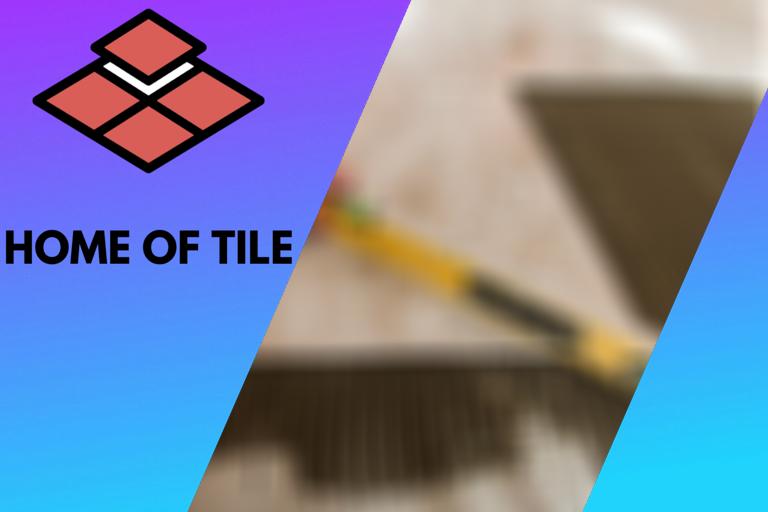How to Tile a Floor, Step by Step
Tiles can be a nice addition to your floors, as they not only provide a protective layer against moisture but also add a good decorative element to your house. Tiles are multifunctional. They can be put on floors, walls, in bathrooms, and even in gardens. Laying tiles is a delicate process that can be difficult if you’re unprepared. If you are afraid that you can not achieve a clean and accurate finish, ask a professional for help.

Contents
- 1 Tiling Floors
- 1.1 ● Step 1: Clean the floor
- 1.2 ● Step 2: Snap the chalk line
- 1.3 ● Step 3: Dry run the tiles
- 1.4 ● Step 4: Snap another chalk line
- 1.5 ● Step 5: Mix the thin-set mortar
- 1.6 ● Step 6: Apply the mortar
- 1.7 ● Step 7: Place the tiles
- 1.8 ● Step 8: Cut the odd tiles
- 1.9 ● Step 9: Place the spacer
- 1.10 ● Step 10: Apply the grout
- 1.11 ● Step 11: Remove excess grout
- 2 Tiling a Bathroom Floor
- 3 Tiling in a Garden
- 3.1 ● Step 1: Check the number of tiles you need
- 3.2 ● Step 2: Clean the wall
- 3.3 ● Step 3: Measure the wall
- 3.4 ● Step 4: Mark the center of the wall
- 3.5 ● Step 5: Mark a horizontal line
- 3.6 ● Step 6: Mix the thin-set
- 3.7 ● Step 7: Spread a layer of thin-set
- 3.8 ● Step 8: Start with the first tile
- 3.9 ● Step 9: Cut tiles where needed
- 3.10 ● Step 10: Work in sections
- 3.11 ● Step 11: Remove the tile spacers and start with the grout
- 3.12 ● Step 12: Remove excess grout
- 3.13 ● Step 13: Apply a grout sealer
- 4 Tools Required for Tiling
- 5 Common Mistakes When Tiling
- 6 Conclusion
Tiling Floors
In general, for tiling floors, first, clean the floor. Snap the chalk lines on the floor. Dry run the tiles, then snap another chalk line. Mix the thin-set mortar and apply it. Place the tiles and, where needed, cut the odd tiles. Use spaces to achieve an even groove between tiles. Apply the grout, and remove any excess grout.
● Step 1: Clean the floor
It would be best if you cleaned all the dust and debris from the floor. This will level the floor.
● Step 2: Snap the chalk line
For snapping the chalk line, first, find the center of the room and then snap chalk lines that should intersect at the center point.
● Step 3: Dry run the tiles
Before tiling, you have to start with a dry run, laying out the spacers and the tiles. This will help you to determine the width of grout lines and where to start tiling.
● Step 4: Snap another chalk line
You have to snap another chalk line that is the width of a tile out from each wall. Continue laying out tiles and spacers until placement is correct.
● Step 5: Mix the thin-set mortar
For tile installation, you have to use a mixed thin-set mortar. Pour a complete bag of the dry mixture into a large bucket, add enough water to make the mixture wet, and start mixing until the mixture has a creamy texture. Let the mortar rest for approximately 10 minutes to make it tacky.
● Step 6: Apply the mortar
When the mortar is ready, start working on one part of the floor. Spread the mixture on a 2’x2′ section of floor and use a notched trowel to even out the mortar. Work in small sections to prevent the mortar from drying before the tile is in position.
● Step 7: Place the tiles
Carefully place the tiles in the desired position.
● Step 8: Cut the odd tiles
Sometimes tiles need to be cut smaller or curved to fit an edge. In this case, you should mark the desired size on the tile and use a tile cutter to cut it to shape.
● Step 9: Place the spacer
If you want to maintain an equal distance between the tiles, use chalk to mark and then place spacers on the chalk lines. Leave the tiles to dry for few days, after which you can apply the grout.
● Step 10: Apply the grout
Grout is available in many colors. Select one which matches the color of your tiles. Use a rubber trowel and apply the grout at an angle to fill and spread the grout evenly.
● Step 11: Remove excess grout
After spreading the grout, you have to remove the extra grout with a sponge. Repeat this process two to three times to remove all the excess grout but be careful not to remove the fixed grout.
Tiling a Bathroom Floor
In general, for tiling a bathroom floor, first clean and prepare the floor. Cut the tile membrane to size. Spread and comb the mortar, and install the tile membrane. Waterproof the membrane seams. Create a starting point for laying tiles and test the layout for tile installation. The next step is to prepare the mortar for the floor and start laying tile. Clean and level the tiles, cut the tile if needed, and let the mortar set.
● Step 1: Layout the membrane and cut where needed
First, lay out your membrane with the fleece side down and mark the subfloor at the edges of the membrane so that you know where to spread the thin-set. Use a utility knife to cut around any pipes.
● Step 2: Mix and spread the thin-set
Mix the unmodified thin-set, it’s the right consistency when you can draw your trowel through it, and the ridges stay standing up. It would be best if you worked one section at a time, so the thin-set doesn’t dry before installing the membrane. Spread the thin-set onto the floor with the smooth side of the trowel, covering the whole area evenly. Then use the notched side of the trowel to comb the mortar.
● Step 3: Apply the mortar and the membrane
Roll the membrane out and press it down into the thin-set using a wooden float. Continue working in sections, applying mortar and then membrane.
● Step 4: Waterproof the seams
To waterproof the seams, you should use waterproofing tape. Spread some thin-set onto the membrane and embed the tape into it with your trowel, making sure you have at least a 2-inch overlap on each seam. Cover the seams between the membrane sections and the seams along the walls.
● Step 5: Mark reference lines for the tiles
Mark reference lines for the tiles. Start by measuring two opposite walls and snapping a chalk line between the center point. Then do the same for the remaining walls. This will give you a starting point. You can spray hair spray on the chalk to help it stay on the membrane.
● Step 6: Lay the tiles
Begin laying the tiles, then use a wet sponge to wipe off any thin-set on the tile surface. Occasionally check for high spots with a long level, and gently use a rubber mallet to even them out. Remember to leave the 1/4-inch gap at the edge of the room. You’ll also need to leave a 1/4-inch gap around any pipes.
● Step 7: Apply the grout
Apply the grout and remove the excess, then allow the tiles to stay for some days. Apply silicone sealant to the gaps. After three weeks, you can apply grout sealant to help protect the grout. Install your baseboards and quarter-round molding.
Tiling in a Garden
In general, for tiling, a wall in a garden first clean and level the surface. Where needed, cut the tiles to size. With the help from latex, fix the tiles after snapping the chalk lines. Test the tile installation and apply the mortar. Clean and level the tile and let the mortar set.
● Step 1: Check the number of tiles you need
Measure the length and width of the wall space and multiply these numbers to get the square foot measurement. It’s a good idea to buy some extra tiles just in case.
● Step 2: Clean the wall
Scrap off all imperfections from the wall. Clean the wall with a brush and water, and wash any debris away from the ground in front of the wall.
● Step 3: Measure the wall
Measure the wall from side to side, make a spot in the center, form a straight line at the mark with a plumb line, and snap a chalk line to mark the center of the wall from top to bottom.
● Step 4: Mark the center of the wall
Add the width of grout space for your tiles. You should use the tile spacers for this purpose, to the height of one tile, and multiply that total by the number of complete tiles it will take to reach the approximate center of the wall, starting from the top. Find that point with the measuring tape and spot that point. Make spots at the same point every few feet along the wall.
● Step 5: Mark a horizontal line
Connect the spots with a straightedge, mark a horizontal line and snap a chalk line. You have to begin laying tiles from the intersection of the two lines and then move outward in each direction. These measurements will ensure that you don’t end up at the top of the wall with a partial tile.
● Step 6: Mix the thin-set
Mix a batch of latex-fortified, non-sag thin-set with water according to directions. The latex additive gives some flexibility to the thin-set so that the tiles and grout don’t crack.
● Step 7: Spread a layer of thin-set
Spread a layer of thin-set on an area about 3 square feet in one quadrant starting at the center point, then carry on running the notched trowel at an angle through the mortar to create an even ridged bed.
● Step 8: Start with the first tile
Lay the first tile in the inside corner of that quadrant, press the piece of tile into the mortar, and apply some pressure so that the tile will have adhered. Then put tile spacers between the tiles to ensure equal spacing. If you want to use tiles on mesh, align each square so that the space between each mesh section is the same as the space between each tile.
● Step 9: Cut tiles where needed
Cut uneven tiles to fit at the ends of each row and column with a wet tile saw. If you want to fit tiles around obstructions such as pipes and windows, make custom cuts with tile nippers, then pinch small pieces at a time to avoid cracking the entire tile.
● Step 10: Work in sections
Continue to spread mortar and put tiles onto the rest of the wall in sections, working from the center outward. Then with slight pressure, tap each tile with the mallet to fix it firmly. And then let it dry for a couple of days.
● Step 11: Remove the tile spacers and start with the grout
Remove the tile spacers and mix a batch of sanded grout according to the directions. Use a grout float, spread the grout over the wall, and hold it to a half perpendicular angle and do this at all angles to fix it perfectly.
● Step 12: Remove excess grout
Let the grout dry for some time, then fill a bucket with water and remove the excess grout with a sponge or a cloth, and ensure not to press too hard that you dig out the grout. Repeat this process with clean water. The next day, buff the tiles with a clean cloth to remove dirt and extra grout haze.
● Step 13: Apply a grout sealer
Finally, apply a grout sealer when the grout is completely dry. Use spray sealers as they are convenient to use, and they also protect the grout from mold and stains.
Tools Required for Tiling
In general, you need the following tools for tiling:
- Angle grinder to cut tiles
- Wet saw if you expect to do a lot of tile sawing
- Bucket to make the mortar and grout
- Drill mixer. You can use an attachment that you can fit onto your cordless drill
- Caulk gun and caulk for caulking where tiles meet other things like a bath
- Cordless drill with matching drills if you need to drill some holes in a tile.
- Drywall saw in case you are going to lay tile on drywall.
- Dust mask, safety glasses
- Measuring tape to measure where to start, where to cut, and how many tiles you will need.
- Knee pads if you are going to lay tile on a floor.
- Grout float to get a nice thin layer of grout
- Notched trowel and a margin trowel
- Putty knife
- Scoring knife
- Utility knife
- T-square to ensure that you have straight tile lines
Common Mistakes When Tiling
There are a couple of mistakes that a lot of people make when they start with tiling:
- Not preparing: Make sure you have all the needed tools and enough tiles.
- Using the wrong trowel size: Use the correct trowel size for the job.
- Cracking the tiles: When you saw tiles of a certain shape, it is easy to crack them.
- Using the wrong underlayer: Using the correct underlayer for your wall or floor ensures a good result, mainly if you will lay tile on a wooden floor or wall.
- Laying the tiles out wrong: If you start wrong, you will have to cut a lot of tiles, and depending on the location, you do not end with an excellent even-looking result.
- Using the wrong grout: Ensure that you have the correct color and grout type.
- Having no backer boards: A backer board is needed for a good result.
- Not buying enough tiles: Measure before starting with the work how big the wall is. Always purchase some spare tiles when you have to cut them, in case some will crack, and some spares for later repairs.
Always be prepared when tiling so that you can avoid making these mistakes and lay your tile perfectly.
Conclusion
Tiling creates a durable addition to your home. They’re easy to clean and look beautiful. Laying tiles is a nice and challenging job, but almost everyone can do it with good preparation, patience, and time. Always ensure you have taken all the correct measurements and have the right tools to follow the step-by-step procedure for the job to be done accurately.







